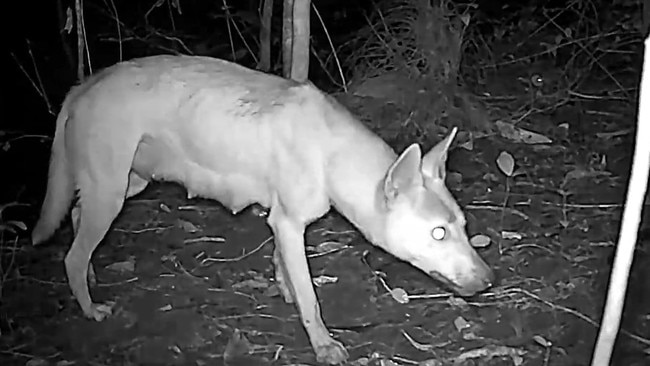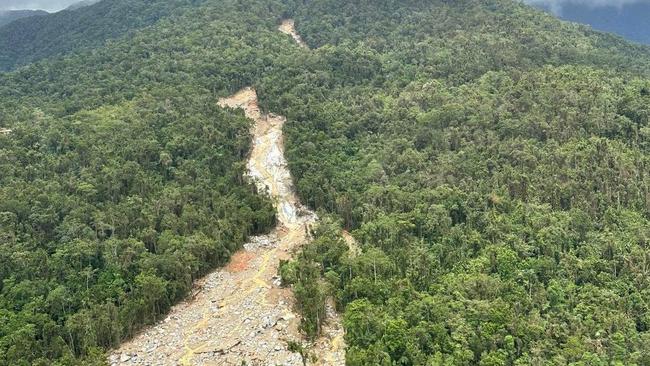JCU expert explains recent spike of northern beaches ‘dingo’ sightings
Multiple theories could explain an increase in the number of ‘dingoes’ on the northern beaches since Cyclone Jasper, including environmental changes caused by the historic deluge. But a JCU zoologist says humans and wild dogs can coexist.

Cairns
Don't miss out on the headlines from Cairns. Followed categories will be added to My News.
Multiple theories could explain an apparent increase in the number of “dingoes” on the Northern Beaches since Cyclone Jasper flooding, including environmental changes caused by the one in a hundred year deluge.
Sightings of wild dogs, sometimes described as “dingoes” by those who have seen them, have increased at Clifton and Kewarra beaches and around Palm Cove area in recent weeks, which coincides with the typical breeding season between February and June.

A lactating bitch caught on a trail camera at a Clifton Beach address, which backs onto Macalister Range bushland, earlier this month confirmed the presence of breeding wild dogs on the doorstep of suburbia.
James Cook University zoologist Dr Conrad Hoskin said three things the animals needed to thrive were in plentiful supply on the northern beaches.
“The main reason they are there is abundant food, water and no predators,” he said.
“There’s so many agile wallabies and (wild dogs) really target agile wallabies, wherever there are.”

Domestic dog attacks, road strikes, and the granting of a special relocation permit to the Agile Project in 2023 has done little to reduce a large concentration of the macropods at parkland between the Trinity and Kewarra beach roundabouts.
Dr Hoskin said the source of prey was enticing the wild dogs out of the hills behind Cairns, but landslides caused by the extreme rain event in December could also be a factor in the uptick of wild dog sightings.

“It could be they have not had access to the wallabies (previously) and have found a natural corridor and taken advantage,” he said.
“(And) they may not be getting killed in some areas and if baiting programs have dropped off you may get bigger numbers.”
Whatever the reason for the spike in sightings, Dr Hoskin said the wild dogs helped to keep a balance in nature and northern beaches locals could coexist with the animals.
“Even if there’s a slight inconvenience people could learn to live with nature and people just need to be careful to stop your dog from roaming at night,” he said.

“They are generally not a threat to humans, they are an animal you can live with and I think we should be living with them.
“Leave them alone, give them space and they are unlikely to be aggressive.
“They want to keep out of our way, they’re naturally shy animals and they want to minimise their interactions with humans.”
At a state level the Department of Environment manages dingoes on Fraser Island only, leaving control of the animals on the mainland to the Department of Agriculture and Fisheries.
Cairns Regional Council manages both feral dogs and dingoes but officers have not been called out to remove any animals this year.
“Recent dingo activity is thought to be related to territorial movements and breeding seasons at the end of wet season,” a spokesman said.
Council reminded residents not to feed feral dogs or dingoes as this encourages human contact.
If residents see or are approached by a feral dogs or dingoes, they should log a report with council online, by calling 1300 69 22 47 or through the My Cairns app.
All captured feral dogs or dingoes are humanely euthanized.
More Coverage
Originally published as JCU expert explains recent spike of northern beaches ‘dingo’ sightings




